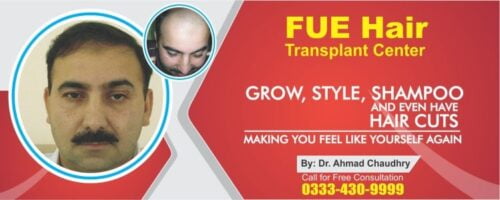Hair growth through hair restoration surgery has become a well-established procedure and they are effective treatments for baldness. Hair loss is the most common problem that affects the personality of men and women. Like good health, so many of us take our hair for granted, until they are gone. It also affects self-esteem. Appearance plays a vital role in the workplace and interpersonal relationships. Baldness can occur due to many factors. These can be due to
- Genetics
- Depression
- Imbalance of hormones
- Aging process
- medication
Hair growth through hair restoration surgery is one of the most successful methods that is increasingly getting popular in the modern age and the results of transplant are also remarkable. By the age of 35 to 40, nearly 2/3 of the men and women face a hair loss problem, and this increases to 85% after the age of 50 years.
What is Hair restoration surgery?
Hair growth through hair restoration surgery adds more shocks to the bald areas of the head. The basic aim of transplant is to restore the growth to the areas with limited or absent growth. In the US doctors are doing these surgeries since 1950 but the methods are quite advanced in recent years.
For surgery first, you have to visit an experienced surgeon. That surgeon will clean your scalp and inject medicines that numb your head. Now he will choose the method of surgery. The surgeons usually take grafts from the sides or back of the head. Transplant has two types.
Follicular Unit Strip Surgery (FUSS)
This type of surgery is also known as follicular unit transplant (FUT). To perform this surgery these steps must be followed.
- First, the surgeon removes a 6-10 inches strip of skin usually from the back of the head but can stretch ear to ear.
- Then close it with stitches and immediately hide it with the hair around it.
- Then the surgeon’s team divides that strip of scalp into 500 to 2000 tiny sections; these sections are called a graft. These grafts contain one to four hairs.
- Now they will be transplanted with the help of a needle and blade. The surgeon makes small holes into your scalp to restore growth.
- Now the surgeon starts grafting by inserting grafts into puncture holes.
- In the end, they covered the head with the help of a bandage.
Follicular Unit Extraction (FUE)
The surgeon follows these steps to perform FUE.
- The surgeon’s team will shave the back of the head.
- Then removed the follicles out of the scalp donor area.
- Now the surgeon makes small holes and grafts t follicles into recipient area.
- Now cover the head with a bandage.
Both methods are the same and require 2 to 7 days to recover. These are effective techniques for transplant. FUE is more technical and requires more skills than FUSS.
Recovery after restoration surgery:
Hair growth through hair restoration surgery is an effective procedure. This restoration method takes 4 to 8 hours, and sometimes it takes more sessions to achieve the patient’s goal.
Small wounds appear after the grafts are in place. These wounds heal quickly within a few days. Meanwhile, you can comb and also wear a loose cap. The patient has to take antibiotics and anti-inflammatory drugs for few days. Most of the patients recover after 3 to 4 days of surgery.
After that, the transplanted hair falls off and new starts to grow. After 6 to 12 months most of the patients will have 95% to 98%% growth.
Conclusion:
Restoration surgery is a good option for the regrowth and it also involves risks as every surgery has, but sometimes it may not be a permanent solution. It restores the self-confidence of many people as well.
If you want free consultation online or an appointment for free check up then you may send us close up images of baldness through WhatsApp +92-333-430-9999
Get a Free Quote | Write or WhatsApp | +923334309999


